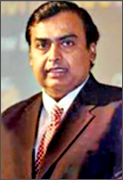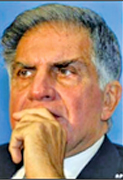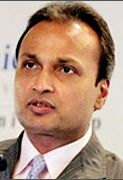The India Way of doing business
|

The Mumbai terrorist attack
|
Peter Cappelli, Harbir Singh, Jitendra Singh and Michael Useem
Ten terrorists launched a violent attack on India's main business
center in November 2008.
The three-day rampage ended with the death of more than 170 people,
including 28 foreigners, the chief of Mumbai's anti-terrorist squad and
the Chairman of Yes Bank.
One of India's most prominent business leaders, Anil D. Ambani,
Executive Chairman of Reliance ADA Enterprises, was scheduled to visit
the U.S. a few days after the attack.
India's Prime Minister, Manmohan Singh asked him to remain at home as
a sign of stability. Not only did Ambani heed the call, but in a
well-publicized event the veteran marathoner jogged with several friends
near one of the scenes of the carnage just hours after it had been
secured. A newspaper called the act "a symbolic display of the
resilience for which Mumbai is widely admired."
In India business leaders have come to be emblematic of national
achievement and fortitude.
When Secretary of State Hillary Clinton visited India six months
after the terrorist attack, she arrived first not in New Delhi, the
political capital, but in Mumbai, the business capital, where she began
by meeting with Indian business leaders, including Mukesh Ambani,
executive chairman of Reliance Industries, and Ratan Tata, head of the
$62 billion Tata Group.
 |
 |
 |
| Mukesh Ambani |
Ratan Tata |
Anil D. Ambani |
India has a way of doing business that brings together business
leadership with national leadership and societal leadership.
Many heads of business are deeply involved in matters from climate
change to child nutrition, and they find it entirely appropriate and
even necessary to make their views on such matters public.
Some of this has to do with a need for development. The heads of many
Indian businesses believe that national growth is essential for their
own profitable expansion. Also, India has a long-standing tradition of
business largesse, with many companies committed to social betterment
through philanthropic giving and investment in infrastructure near their
facilities.
But the melding goes well beyond private profit and public charity.
Indian leaders care as much about national purpose as about financial
results. Thus the Co-Chairman and former Chief Executive of Infosys
Technologies, Nandan Nilekani, has accepted a call to direct India's
mammoth effort to provide a unique digital identification number for
every one of its 1.1 billion citizens, which will make possible more
effective delivery of social services across the country.
And thus Hindustan Unilever has launched Project Shakti, which has
used the principles of microfinance to create a sales force in some of
the subcontinent's most remote regions.
And big-name businesses have built community hospitals, grade schools
and virtual universities across the country.
This India Way of doing business has fuelled an economy that even in
perilous global times remains a dynamo, driven by big companies that are
bent on growing at prodigious rates.
India's gross domestic product has been expanding more than twice as
fast as the U.S.'s. Infosys Technologies employed 10,700 in 2002, but
more than 100,000 just seven years later.
We have conducted a study of some of the country's largest firms, of
businesses that have played a leading role in India's rapid development
and have come to serve as models of business enterprise for
entrepreneurs and managers throughout the nation.
Our aim has been to understand the qualities of the India Way that
have made it so vital to the nation's growth.
We interviewed the people at the top of the pyramid, the leaders of
these largest firms, because they make the critical decisions at the
most important companies, including the strategic choices that have
helped define India's distinctive approach to business. We went to 150
of the largest publicly listed companies by market capitalization, and
we secured time with more than 100 of their executives.
The essence of the India Way is best expressed by those business
leaders themselves. We "think in English and act in Indian," observed R.
Gopalakrishnan, the executive director of Tata Sons, the holding company
of the Tata Group.
The Tata Group comprises some 98 enterprises that employ 290,000 and
book annual revenue equal to 3.2 percent of the nation's GDP.
"For the Indian manager," Gopalakrishnan explained, "his intellectual
tradition, his y-axis, is Anglo-American, and his action vector, his
x-axis, is in the Indian ethos. Many foreigners come to India, they talk
to Indian managers and they find them very articulate, very analytical,
very smart, very intelligent-and then they can't for the life of them
figure out why the Indian manager can't do what is prescribed by the
analysis." We have found from our two-year study of Indian business
leaders that their "x-axis" is defined by four distinctive elements of
managing:
Holistic engagement with employees
Indian business leaders see their firms as organic enterprises, where
sustaining employee morale and building company culture are critical
obligations and the very foundations of their success. People are viewed
as assets to be developed, not costs to be reduced.
Improvisation and adaptability
Improvisation and adaptability are also at the heart of the India
way. In a complex, often volatile environment with few resources and
maddening red tape, business leaders learn to rely on their wits to
circumvent the innumerable hurdles they recurrently confront.
Anyone who has seen outdated equipment nursed along a generation
after its expected lifetime with retrofitted spare parts and
jerry-rigged solutions has witnessed this in action.
Creative value propositions
Given the enormous and intensely competitive domestic market and the
country's discerning customers, most of them of modest means, Indian
business leaders have of necessity learned to be highly creative in
developing their value propositions, delivering entirely new products
and services with extreme efficiency.
A case in point: Tata Motors now produces the Nano automobile at a
sticker price of just $2,500.
Broad mission and purpose
Indian business leaders place special emphasis on personal values and
on having a vision of growth and strategic thinking. In addition to
serving the needs of their stockholders, like CEOs everywhere, they also
stress broader purpose.
They take pride in enterprise success but also in family prosperity,
regional advancement and national renaissance.
Bundled together, these principles constitute a distinctly Indian way
of conducting business, one very different from other countries,
especially the U.S., where the blend centers more on delivering
shareholder value.
Company managers in the West, we have concluded, can usefully learn
from India's example. Whether this is a good moment to invest in the
subcontinent we leave to those more versed in the ways (and caprices) of
the financial markets.
But we believe the time is right to better understand what is driving
the Indian economic powerhouse, the company practices we have come to
call the India Way.
The authors are professors of management at the Wharton School of the
University of Pennsylvania and are the co-authors of The India Way: How
India's Top Business Leaders Are Revolutionizing Management (Harvard
Business Press, 2010), from which this article is drawn. Forbes.com.
|



